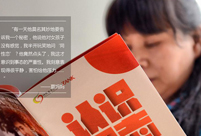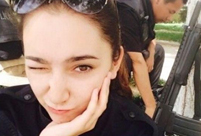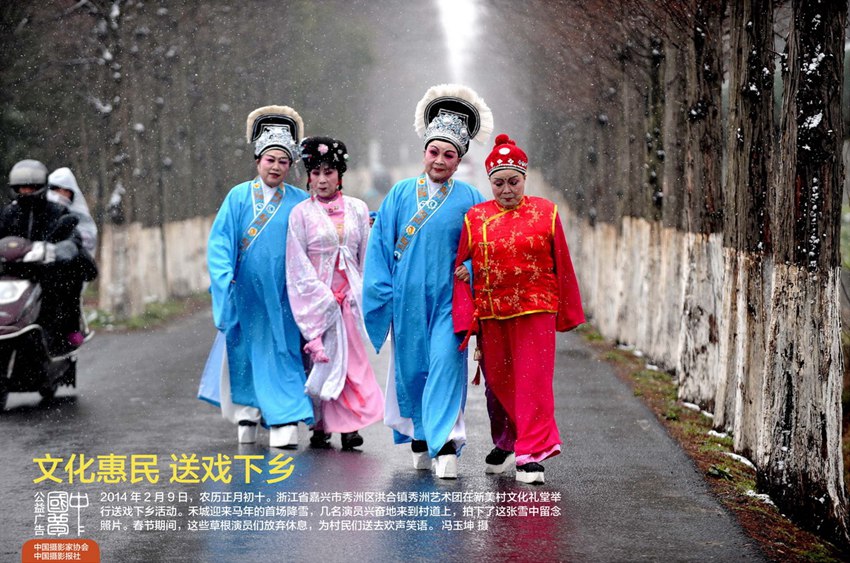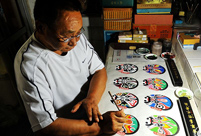 Ceremony volunteers for Youth Olympics make public appearance
Ceremony volunteers for Youth Olympics make public appearance
 A glimpse of female crew of Liaoning aircraft carrier
A glimpse of female crew of Liaoning aircraft carrier
 Stills from "Dad, where are we going?"
Stills from "Dad, where are we going?"
 Legless man's happy life
Legless man's happy life
 Top ten most beautiful islands in China
Top ten most beautiful islands in China
 Aerial view of Hong Kong
Aerial view of Hong Kong
 Happy life in Xinjiang
Happy life in Xinjiang
 2014 China Hainan Int'l Automotive Exhibition kicks off
2014 China Hainan Int'l Automotive Exhibition kicks off
 Collection of 'China Dream' public-spirited ads
Collection of 'China Dream' public-spirited ads
 The silent holy stones
The silent holy stones
SYDNEY, July 21 -- In what has been a grim week for the international AIDS community - with the loss of former International AIDS Society president Joep Lange and Art Aids leader Jacqueline van Tongeren among the victims on flight MH17 over Ukraine - reports have been confirmed Monday that two HIV- positive men have returned "undetectable levels" of the virus in Sydney.
The patients, treated at St Vincent's Hospital in partnership with the University of New South Wales's (UNSW) Kirby Institute, have undetectable levels of HIV more than three years after undergoing bone-marrow transplants.
These are the first successful cases of HIV being cleared in Australia.
The international AIDS community is mourning the deaths of researchers, activists, health workers and people with HIV after their plane was lost over Ukraine last week as they traveled to Melbourne for a global AIDS conference.
David Cooper, director of the Kirby Institute at UNSW Australia, will find some solace in the breakthrough in the wake of the loss of his friend and colleague Joep Lange with whom he worked for over 30 years.
Professor Cooper said Lange had "an absolute commitment to HIV treatment and care in Asia and Africa."
"Joep was absolutely committed to the development of affordable HIV treatments, particularly combination therapies, for use in resource-poor countries," Cooper said.
The breakthrough was due to be heralded at the Towards an HIV Cure Symposium - part of the 20th International AIDS Conference in Melbourne - which instead became a focal point of grief for the community in the wake of the MH17 tragedy.
Despite the work being overshadowed the long-term benefits of the Kirby Institute research will be felt for years to come.
Cooper said the results herald a new direction in HIV research and new hope for HIV positive people with leukaemia and lymphoma.
In the Sydney cases, one patient had a successful bone marrow transplant in 2010 for non-Hodgkin's lymphoma. His donor had one of two possible copies of a gene that affords protection against the virus.
However, in 2011, a second man underwent a similar procedure for acute myeloid leukaemia, but had a bone marrow donation without any genetic fingerprint that affords protective immunity.
Both cleared the virus, but remain on antiretroviral therapy as a protective measure.
"We're so pleased that both patients are doing reasonably well years after the treatment for their cancers and remain free of both the original cancer and the HIV virus," said the senior author of the study and UNSW Kirby Institute director, Scientia Professor David Cooper.
Until now, the only person considered to have cleared HIV is an American man, Timothy Ray Brown, who had two bone marrow transplants in Berlin in 2007 and 2008.
In Boston, two other patients underwent similar bone marrow transplants in 2012 but the transplanted cells did not contain the CCR5 gene mutation. In both cases the virus returned after antiretroviral treatment was stopped.
"It is very difficult to find a match for bone marrow donors and even more so to find one that affords protective immunity against HIV," said the UNSW-based Professor Cooper, who is also an HIV specialist at St Vincent's Hospital in Sydney's Darlinghurst.
While the Sydney results are a ray of light in a dark time for HIV community, the researchers say bone marrow transplants are not a general functional "cure" for the up to 38.8 million people infected with HIV worldwide.
Bone marrow transplantation is a difficult and costly procedure that can result in the death of one out of every ten patients.
"This is a terrific unexpected result for people with malignancy and HIV. It may well give us a whole new insight into HIV, using the principles of stem cell transplantation," said Dr. Sam Milliken, director of St Vincent's Haematology & Bone Marrow Transplantation and study co-author.
"It is important to caution that at this stage, this form of treatment is far too dangerous for treating patients with HIV alone, but there may be potential for using transplants as an effective treatment modality for HIV down the track," said Dr. Milliken.
The two existing Sydney patients will be the subject of investigations to work out where any residual virus might be hiding and how it can be controlled.
"Working out where the remains of the virus is hiding has become the big scientific question in the HIV/AIDS research community. It will be essential to understand in order to achieve a cure," said Professor Cooper.
For the time being, the Sydney results mean that more people who are suitable for bone marrow transplants might be able to participate in clinical trials to determine the value of this procedure.
Dr. Milliken agrees: "We hope UNSW Australia and St Vincent's Hospital will be the hub for people requiring these types of transplants."
Currently only around six patients per year in Australia undergo such procedures.
Despite widespread reports that around 100 of the plane's passengers were on the way to the AIDS 2014 conference, that figure is yet to be confirmed.
"For the global community of HIV AIDS researchers, health workers and activists gathered in Melbourne this weekend, and for all those who are living with HIV and their families, this will be especially heartbreaking. If you know someone whose life has been touched by HIV, please hug them today," Australia's Greens Senator Christine Milne told Xinhua via email.
 Moms on their kid’s coming out
Moms on their kid’s coming out Chinese fighters through lens
Chinese fighters through lens
 Children attend gymnastics training in summer
Children attend gymnastics training in summer
 Beautiful sceneries along the special travel route in Xinjiang
Beautiful sceneries along the special travel route in Xinjiang
 Beauty SWAT member in Xinjiang sparks online frenzy
Beauty SWAT member in Xinjiang sparks online frenzy
 Germany beat Argentina 1-0 to win World Cup
Germany beat Argentina 1-0 to win World Cup
 National fitness team members integrate traditional and modern beauty
National fitness team members integrate traditional and modern beauty Collection of 'China Dream' public-spirited ads
Collection of 'China Dream' public-spirited ads  How Chinese men kill the time when their wives practice square dancing?
How Chinese men kill the time when their wives practice square dancing? Top 10 most beautiful islands in China
Top 10 most beautiful islands in China
 Zhou Xun announces engagement to Archie Gao
Zhou Xun announces engagement to Archie Gao
 Photos of the Week
(July 6 - July 12)
Photos of the Week
(July 6 - July 12)
 'Super moon' seen in Beijing
'Super moon' seen in Beijing
 One-legged women with high heel goes viral on Internet
One-legged women with high heel goes viral on Internet China's largest 3D printer builds 2-meter-long boat
China's largest 3D printer builds 2-meter-long boat
Day|Week|Month